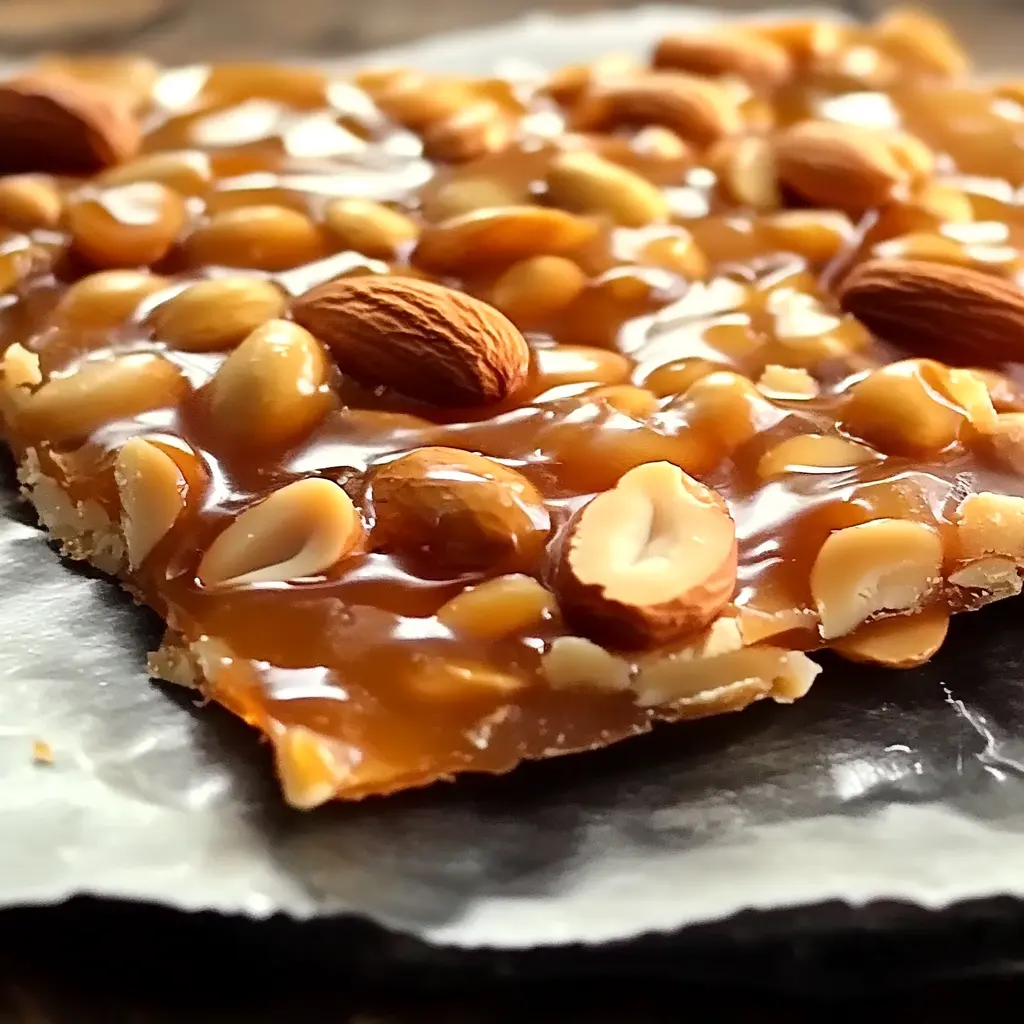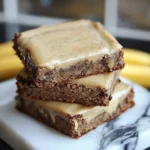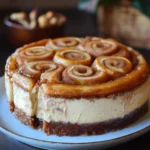Description of this recipe: This recipe delivers a perfectly crisp and intensely flavorful peanut brittle, just like you remember from childhood. It’s a classic confection that’s surprisingly easy to make at home with a few simple ingredients and careful attention to temperature.
Why you will love this recipe: This peanut brittle recipe is a delightful balance of sweet, salty, and nutty flavors, with a satisfyingly crunchy texture. It’s perfect for gifting, holiday gatherings, or simply enjoying as a sweet treat any time of year. The process itself is also quite rewarding, watching the sugar transform into a glistening, golden brittle. Plus, homemade peanut brittle is far superior to store-bought versions, with a fresher, more intense flavor and a more satisfying snap.
Introduction
Peanut brittle is more than just a candy; it’s a memory. The satisfying crack as you break off a piece, the sweet and salty flavor explosion on your tongue, the nostalgic aroma that fills your kitchen – it all adds up to a sensory experience that transports you back to simpler times. While many might think of peanut brittle as a complicated confection best left to the professionals, this recipe proves that you can easily create a batch of perfect brittle right in your own kitchen.
The key to success lies in understanding the science of sugar. Heating sugar to a high temperature causes it to undergo a series of transformations, eventually caramelizing and hardening into a glassy texture. Adding peanuts provides a delicious textural contrast and infuses the brittle with their nutty flavor. The butter adds richness and helps prevent the brittle from becoming too hard, while baking soda creates air pockets, resulting in a lighter, more delicate crunch.
This recipe walks you through each step of the process, providing detailed instructions and helpful tips to ensure your peanut brittle turns out perfectly every time. So, gather your ingredients, put on your apron, and prepare to create a sweet and crunchy masterpiece that will impress your friends, delight your family, and satisfy your own sweet tooth. Get ready to unleash your inner confectioner and experience the joy of homemade peanut brittle!
Ingredients:
- 2 cups granulated sugar: This provides the foundational sweetness and structure of the brittle. Use regular granulated sugar for best results.
- 1 cup light corn syrup: Corn syrup helps prevent crystallization and gives the brittle a smooth, glassy texture. Don’t substitute with dark corn syrup, as it will alter the flavor and color.
- 1/2 cup water: Water helps dissolve the sugar and corn syrup, creating a stable mixture for cooking.
- 1/4 teaspoon salt: A pinch of salt enhances the sweetness and balances the overall flavor profile.
- 2 cups salted roasted peanuts: Use high-quality salted roasted peanuts for the best flavor. Make sure they are evenly roasted and not stale. You can use dry-roasted or oil-roasted peanuts, depending on your preference. The salt is crucial for the balance of flavor.
- 2 tablespoons unsalted butter, softened: Butter adds richness and helps prevent the brittle from becoming too hard and brittle (ironically). Softened butter incorporates more easily and evenly into the mixture.
- 1 teaspoon baking soda: Baking soda creates air pockets, resulting in a lighter, more delicate crunch. It also helps to lighten the color of the brittle.
- 1 teaspoon vanilla extract: Vanilla extract enhances the overall flavor and adds a touch of warmth. Use pure vanilla extract for the best results.
Preparation:
Step 1: Prepare the Baking Sheet: Line a rimmed baking sheet (approximately 13×18 inches) with parchment paper or lightly grease it with butter. Parchment paper is recommended for easy removal and cleanup. Make sure the baking sheet is large enough to accommodate the entire mixture in a thin layer. Having this prepared before you start cooking is essential as you’ll need to act quickly once the brittle reaches the right temperature.
Step 2: Cook the Sugar Mixture: In a heavy 2-quart saucepan (or larger), combine the granulated sugar, light corn syrup, water, and salt. Using a heavy-bottomed saucepan is crucial because it distributes heat evenly and prevents scorching. Cook over medium heat, stirring occasionally until the sugar dissolves and the mixture comes to a boil. Once boiling, stop stirring unless absolutely necessary to prevent sticking or burning. Stirring too much at this stage can cause sugar crystals to form, resulting in a grainy brittle.
Step 3: Add Peanuts: Once the sugar mixture reaches a boil, stir in the salted roasted peanuts. Continue cooking, stirring frequently now to prevent the peanuts from burning, until the mixture reaches 300°F (150°C) on a candy thermometer. This is the “hard crack” stage, where the sugar has caramelized and will harden into a brittle texture. Accuracy is paramount here; a candy thermometer is essential for ensuring the correct temperature. Clip the thermometer to the side of the saucepan, making sure the bulb is submerged in the liquid but not touching the bottom.
Step 4: Incorporate Butter and Vanilla: Remove the saucepan from the heat immediately after reaching 300°F. Stir in the softened butter and vanilla extract until smooth and fully incorporated. The butter will melt quickly and should blend in evenly.
Step 5: Add Baking Soda: Stir in the baking soda. Be careful, as the mixture will foam up rapidly. This is a normal reaction and creates the signature light and airy texture of peanut brittle. Stir gently but thoroughly to distribute the baking soda evenly throughout the mixture.
Step 6: Pour and Spread: Immediately pour the mixture onto the prepared baking sheet. Use a heat-resistant spatula to quickly spread the mixture into a thin, even layer. Work quickly, as the brittle will start to harden as it cools. Don’t worry about achieving perfect uniformity; a slightly uneven surface adds to the rustic charm.
Step 7: Cool and Break: Let the brittle cool completely at room temperature before breaking it into pieces. This may take an hour or more, depending on the humidity. Once completely cooled and hardened, you can break it into pieces by hand or use a knife to score it and then break along the scored lines.
COOKING Rating:
- Difficulty: Medium (requires attention to temperature and timing)
Serving Suggestions:
- Serve as a standalone sweet treat.
- Package in cellophane bags or decorative tins for gifting.
- Crush and sprinkle over ice cream or yogurt.
- Use as a topping for cakes or cupcakes.
- Include in a holiday candy assortment.
Tips:
- Use a heavy-bottomed saucepan to prevent scorching.
- A candy thermometer is essential for accurate temperature control.
- Stir the mixture frequently after adding the peanuts to prevent burning.
- Work quickly when spreading the mixture onto the baking sheet.
- Store peanut brittle in an airtight container at room temperature to maintain its crispness.
- Avoid making peanut brittle on humid days, as it can absorb moisture and become sticky.
- If the brittle doesn’t spread easily, you can briefly warm it in the oven at a low temperature (around 200°F) to make it more pliable.
- If you don’t have parchment paper, you can use a well-greased baking sheet, but the brittle may be more difficult to remove.
Prep Time:
- 15 minutes
Cook Time:
- 20-25 minutes
Total Time:
- 45 minutes + cooling time
Nutritional Information: (per serving, approximate)
- Note: Nutritional information can vary depending on the specific ingredients used and serving size. This is an estimate only.
- Calories: 200-250
- Protein: 3-5 grams
- Sodium: 50-75 mg
Conclusion
Congratulations! You’ve just created a batch of delicious homemade peanut brittle. With its irresistible combination of sweet, salty, and crunchy flavors, this classic confection is sure to be a crowd-pleaser. Whether you’re making it for a special occasion or simply satisfying a sweet craving, this recipe will become a go-to favorite. The key to success lies in careful attention to detail, accurate temperature control, and a little bit of patience. So, don’t be afraid to experiment, have fun, and enjoy the sweet rewards of your homemade peanut brittle!
Frequently Asked Questions:
Q1: My peanut brittle turned out too sticky. What did I do wrong?
A: Stickiness in peanut brittle is usually caused by insufficient cooking. The sugar mixture needs to reach the “hard crack” stage at 300°F (150°C) to achieve the desired crispness. If you didn’t reach this temperature, the brittle will remain soft and sticky. Another potential cause is high humidity, which can cause the brittle to absorb moisture from the air. If it’s a humid day, try making it in a climate-controlled environment or consider adding a tablespoon of glucose to the recipe to help prevent moisture absorption.
Q2: My peanut brittle is grainy. How can I prevent this?
A: Graininess in peanut brittle is often caused by sugar crystals forming during the cooking process. This can happen if you stir the sugar mixture too much after it comes to a boil. Try to avoid stirring unless absolutely necessary to prevent sticking or burning. Adding corn syrup to the recipe also helps prevent crystallization. Ensure you are using light corn syrup, as dark corn syrup can contribute to graininess. Also, make sure there are no sugar crystals on the sides of your pan while cooking; you can wash them down with a wet pastry brush.
Q3: Can I use honey instead of corn syrup?
A: While you can technically use honey instead of corn syrup, it will significantly alter the flavor and texture of the peanut brittle. Honey has a stronger flavor and a higher moisture content than corn syrup, which can result in a softer, chewier brittle with a distinct honey flavor. If you choose to use honey, start with a smaller amount and adjust the cooking time accordingly. Be aware that the results may not be the same as with corn syrup.
Q4: Can I use different types of nuts besides peanuts?
A: Absolutely! While this recipe is specifically for peanut brittle, you can easily substitute other nuts like almonds, pecans, cashews, or walnuts. Keep in mind that different nuts have different flavor profiles and roasting times, so you may need to adjust the recipe slightly to achieve the best results. For example, almonds may require a longer roasting time than peanuts. Adjust the amount of salt accordingly, considering the natural saltiness of the nuts you are using.
Q5: How long does peanut brittle last?
A: When stored properly in an airtight container at room temperature, peanut brittle can last for up to 2-3 weeks. However, its crispness may diminish over time, especially in humid environments. To keep it as fresh as possible, avoid storing it in the refrigerator, as the moisture can make it sticky. If you live in a humid area, consider adding a desiccant packet (like the ones found in shoe boxes) to the storage container to absorb excess moisture. Enjoy your brittle within a few weeks for the best flavor and texture!




